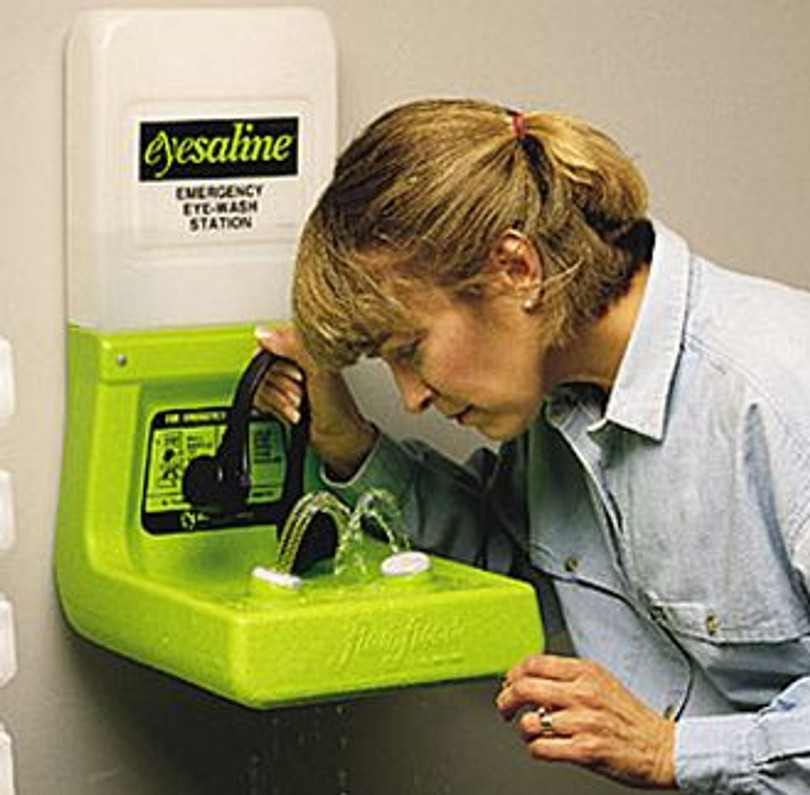What Is an Emergency Eyewash Station?
Eye injuries are a common occurrence in the workplace. According to the U.S. Bureau of Labor Statistics (BLS), over 20,000 workers sustain an eye injury each year in the United States. While many work-related injuries involve protrusion from shrapnel, others involve exposure to chemicals. Eyes are sensitive, and when exposed to various chemicals, they can become damaged. There are emergency eyewash stations available, however, to protect workers from chemical-related eye injuries.
Overview of Emergency Eyewash Station
An emergency eyewash station is a setup of equipment that's designed to quickly and efficiently flush a worker's eyes. If a worker happens to get a chemical or other potentially harmful substance or liquid in his or her eyes, the worker can use an emergency eyewash station. The nozzle will project a low-pressure stream of saline towards the worker's eyes, thereby flushing out the otherwise harmful chemical.
Why Use an Emergency Eyewash Station
With an emergency eyewash station, workers will be protected from chemical-related eye injuries. Time is of the essence when treating chemical-related eye injuries. The longer the chemical sits on a worker's eyes, the greater the risk of severe and long-term damage. An emergency eyewash station allows workers to quickly flush chemicals from their eyes.
In some workplaces, an emergency eyewash station isn't optional; it's a requirement. The Occupational Safety and Health Administration (OSHA) states that emergency eyewash stations must be used in all workplaces where "the eyes or body of any person may be exposed to injurious corrosive materials, suitable facilities for quick drenching or flushing of the eyes and body shall be provided within the work area for immediate emergency use."
Tips on Setting Up an Emergency Eyewash Station
A good rule of thumb is to set up the emergency eyewash station at a distance of no more than 10 seconds -- when walking -- from the hazard. In other words, workers should be able to reach it within 10 seconds after being exposed to the hazardous chemical. If the emergency eyewash station is too far away, they may not be able to reach it in time.
You should also consider purchasing extra saline containers for the emergency eyewash station. After all, emergency eyewash stations rely on saline to provide their flushing benefits. Without it, nothing will come out the nozzle. Therefore, it's a good idea to stock up on saline containers for your workplace's emergency eyewash station.
Recent Posts
-
Fire Safety in the Workplace: What You Need to Know
What steps are you taking to prevent fires in your workplace? According to the U.S. Occupational Saf …Aug 23rd 2023 -
Is It Safe to Go Jogging With a Cold Infection?
If you're suffering from a cold infection, you might be wondering whether it's safe to go jogging. T …Aug 22nd 2023 -
5 Safety Tips to Follow When Using a Powder-Actuated Tool
Powder-actuated tools are commonly used to join materials to steel and concrete. Also known as Hilti …Aug 20th 2023




